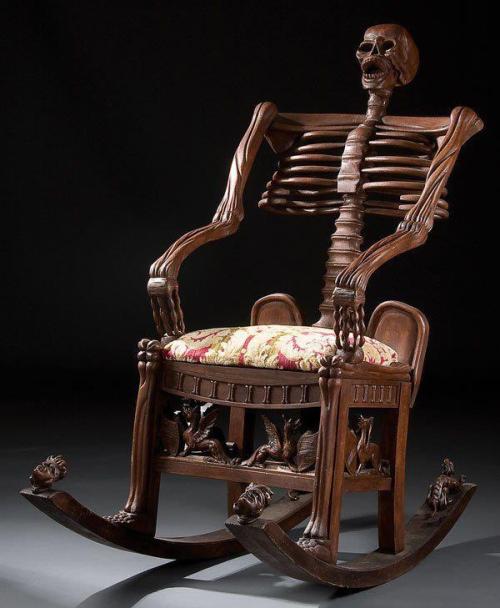In honor of the 1st of April here's a fun little piece from
The Cud - that's now, of course, in my new book,
Welcome To Weirdsville, about one of my all-time favorite pranksters:
the legendary Brian G. Hughes!
Nicodemus, By Broomstick Out Of Dustpan By Sweeper,
The Last
Of The Exotic Brindle Breed
"A Priest, A Rabbi, and A Minister Walk Into a Bar–"
What? You've heard that one? How about: "There once was a man from Nantucket–"
That one too? What about: "Yer Momma is so–"
Well, here's one who probably haven't ever heard, the one that starts: "There was this guy, named Brian G. Hughes..."
#
There
was this guy, named Brian G. Hughes. He was an Einstein, a Salk, a
Beethoven, a da Vinci – but he wasn't a physicist, a doctor, a composer,
or a painter. He was, according to the society pages, a rather wealthy
box manufacturer and a banker. But his genus wasn't in cardboard or
playing the market.
New York around the turn of the
previous century was a pretty dull berg, full of overly stuffed shirts
and far-too-puffed-out egos. It was a dull place, a humorless place, a
terribly stiff place – a city, and a society, that Brian G. Hughes saw
as needing to be seriously goosed.
And goose it he did:
with a flare and a flamboyance that shook New York from Battery Park to
Queens. Take for instance the time he donated a plot of valuable
Brooklyn real estate to the city, to be made into a public park. Great
gesture, right? Fine civic spirit, correct? That's what the Board of
Aldermen thought – until they actually took the time to check it out.
See, the plot of land Brian G. Hughes had donated was only a two-by-six
foot plot. Hey, he never said it would make a big park ...
Then
there was the time he donated a mansion to a few well-respectable
historical societies, one he claimed the Marquis de Lafayette had lived
in during the War of Independence. "Wow" went the Ladies of those
Historical Societies, "What a find." Until they checked out the real
estate and discovered the mansion was actually a dilapidated flophouse
in the Bronx. Seriously lacking in the giggle department, the ladies
tried to have him committed. Now there was a hearing worth attending.
But
real estate wasn't the only thing Hughes used in his pranks. For
instance, he would routinely hang out in front of Tiffany's and drop
boxes of fake jewels – just to watch people scramble to snatch up the
supposed treasures. Another time he left a set of burglar tools out in
front of a building. Nothing special in that, right? Well, the
building was the Metropolitan Museum of Art, which prompted the – no
doubt humorless – curator to close the entire landmark to frantically
search for any missing paintings.
Love cats? Well, Mr.
Hughes did – though he hated the pomposity of cat shows. One time he
entered what he claimed was a spectacularly rare species. The whole of
New York was buzzing about this feline masterpiece, and it even won a
ribbon, though later on it was revealed that the cat, "Nicodemus, by
Broomstick out of Dustpan by Sweeper, the last of the exotic Brindle
breed," had actually been a common stray bought from a hobo.
Love
horses? Well, Mr. Hughes ... I think you know where this might be
going. His "Orphan Puldeca, out of Metropolitan by Electricity"
thoroughly impressed the horse show crowd, until one
sharper-than-average person figured out that "Orphan Puldeca" meant
"Often Pulled the Car" and Hughes admitted that his entry was a noble
example of a simple trolley horse.
Say you happened to
be in a downtown establishment during, alas, a totally unexpected
downpour. Why, look over there: a lovely – and apparently unclaimed –
umbrella. It wouldn't be theft, you argue with yourself. You'll bring
it right back, you conclude. Except that the instant you opened the
umbrella, one of hundreds placed around the city, a banner would unfurl
proclaiming that the bumbershoot had been STOLEN FROM BRIAN G. HUGHES.
While
Mr. Hughes was, no doubt, a charming person to know it was best not to
accept tickets from him as he was known to (tee-hee-hee) print up
hundreds different ones to all kinds of events – which never existed.
Then,
perhaps the capper to a wonderfully colorful career keeping the
too-well-heeled on their toes and putting pepper up the noses of the
upper-crusts, he announced that he – at considerable expense and at
tremendous personal risk – would embark on an expedition to deepest and
no-doubt darkest South American in pursuit of the elusive reetsa.
For
weeks New York was on the edge of its manicured toes, gasping in
excitement into its perfumed handkerchiefs, as word of the Hughes
expedition was leaked out until, just as high society feared they could
take no more, it was announced that Hughes would be returning to the
island – with a living, breathing resets!
The city was
aghast, the city was amazed, the city was riveted. By the thousands
they came down to the docks to watch Hughes return, triumphant, from his
perilous journey. Then, those crowds frozen in suspense, the ship
arrived and Hughes made his triumphant appearance – with is captured
reetsa...
There was this guy, named Brian G. Hughes,
who convinced all of New York City that he'd traveled to South America
to capture the mysterious reetsa – that turned out to be a simple farm
animal, which he led down the gangplank backwards. Reetsa, naturally
being "a steer" spelled backwards.
Here’s to you, Brian
G. Hughes: the man who made an island laugh, a whole city giggle, who
brought practical jokes to a whole new, and gloriously special, level:
truly the last of a very special exotic brindle breed.




